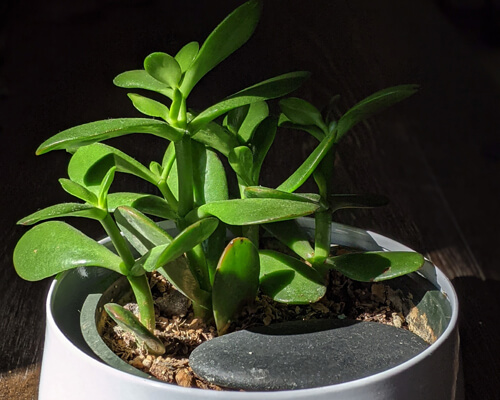How to Save a Dying Rosemary Plant?

Are you frustrated by how to save a dying rosemary plant? Don’t give up just yet.
There are simple techniques available to all gardeners that can help restore the health and beauty of your beloved herbs.
In this blog post, we’ll explore what might be causing your rosemary plant’s unraveling.
Equip you with the knowledge for how to save a dying rosemary plant and tips for how best to keep it healthy so it lasts year-round.
16 Reasons why your rosemary is dying and how to fix it
1. Overwatering
This is a common cause of rosemary plant death, as the roots are very sensitive to excessive moisture.
Rosemary prefers dry, well-drained soil and should only be watered when the top 2 inches of soil is dry to the touch.
If overwatering is suspected, allow the soil to dry out completely before watering again, and make sure the pot has adequate drainage holes.
2. Underwatering
An insufficient amount of water can also cause rosemary plants to die, as they require regular irrigation in moderate amounts.
During summer months, water your rosemary deeply but infrequently so that the root system has time to absorb enough moisture for the plant to survive.
About once a week for container-grown plants and every other week for garden-grown plants should suffice.
Additionally, during extreme heat waves or dry spells, you may need to increase your watering frequency slightly to prevent wilting and death of your rosemary plants.
3. Incorrect Soil
The ideal soil for rosemary should be light and sandy, with a slightly acidic pH level between 6-7.
If your rosemary isn’t getting enough nutrients from its current environment it could be dying off due to either an imbalanced pH level or soils with too much clay or sand content.
This can restrict proper root growth and airflow essential for healthy growth.
Amend your existing soil by adding compost or organic matter, such as manure and peat moss. So that it more closely matches the ideal growing conditions required by this herbaceous perennial shrub.
4. Lack of Pruning
Pruning helps promote robust growth in both indoor and outdoor rosemary plants.
However, if left unpruned it can lead to unruly and spindly growth or even worse–death.
To promote vigorous new growth, prune back any dead stems or branches at least once a year. Preferably in late winter before spring growth begins.
So that the shrub maintains its desired shape while allowing room for healthier shoots and foliage to develop over time.
5. Inadequate Light
Rosemary requires plenty of sunlight for it thrives.
A minimum of six hours per day is recommended for optimal health. But eight hours per day will ensure maximum results.
If you’re growing your rosemary indoors opt for a bright window sill spot, where they’ll receive maximum direct sunlight throughout most parts of the day.
Otherwise, give them plenty of sunshine outdoors on warm sunny days, when temperatures are milder than 80 degrees Fahrenheit (26 degrees Celsius).
6. Incorrect Temperatures
Rosemary enjoys warm weather but doesn’t do well in extremely hot conditions.
Temps greater than 80 degrees Fahrenheit (26 degrees Celsius) will cause leaves to wilt and drop prematurely resulting in potential death. If not remedied quickly enough with shade or cooler weather conditions.
In winter months keep inside temperatures above 40 degrees Fahrenheit (4 degrees Celsius).
As temperatures lower than this can stunt plant growth significantly leading to eventual death.
If not resolved quickly enough with warmer climes or frost protection methods, such as covering outdoor beds with tarps when necessary.
7 High Humidity
High humidity levels can be harmful to some rosemary plant species. This is because too much moisture can promote fungal diseases such as powdery mildew. If left untreated, it can spread rapidly.
Prevention is key, so try placing containers away from overly humid areas, such as bathrooms/showers where humidity levels tend to be higher than average.
Being out and about during the drier months will help reduce this problem. Ensure better air flow around the leaves while providing more overall space for natural sunlight exposure.
8 Root Rot
Poor drainage combined with excessive watering can lead to root rot. This is mainly because wet soil prevents the oxygenation necessary for healthy root development.
Ensure that the soil drains effectively within 10 minutes after each watering, otherwise transplant into a suitably sized container with adequate drainage holes in the bottom.
Then use fine gravel/perlite to lighten the existing soil mixture until the desired consistency is achieved, then replant.
9. Pests
If your rosemary plant is showing signs of damage and has a large number of small holes in the leaves, it is likely due to pests such as aphids or spider mites.
To fix this problem, you should inspect the plant for any signs of an infestation then remove any visible pests with a damp cloth or cotton swab.
If the infestation is severe, it may be necessary to use an insecticidal soap spray or horticultural oil to reduce the pest population.
10. Powdery Mildew
This type of fungal disease can cause white patches on the leaves and stems of your rosemary plant.
To prevent the development of powdery mildew, it is important to ensure that there is adequate air circulation around the rose. This is done by trimming back overcrowded back leaves and avoiding overwatering.
If you notice any signs of powdery mildew, you can treat the affected areas with a fungicide designed for rosemary.
11. Incorrect pH
Rosemary plants prefer soil with a pH level that is slightly acidic (5-7).
If they are grown in soil with too high a pH level, their growth will be stunted and they may become susceptible to diseases such as root rot or powdery mildew.
To fix this issue, you should test the pH level of your soil using an inexpensive home testing kit and adjust it accordingly using sulfur or lime if necessary.
12. Overpruning
It’s easy for rosemary plants to become overpruned when trimming off dead branches or foliage as new growth occurs each season.
However, this can lead to decreased productivity from your plant and weaken its overall health.
Therefore, when pruning always stick to removing only what is absolutely necessary and avoid taking too much at once. Otherwise, you may end up causing more harm than good.
13. Nutrient Imbalance
Rosemary plants need certain nutrients found in soil in order to grow effectively.
If these are lacking then it could cause poor growth and yellowing leaves. This could eventually lead to the death of your plant if left untreated.
To solve this problem, you should have it analyzed by a local lab so that you can assess the nutrient levels of your soil.
Then adjust it with organic matter such as compost if needed. Or, if desired, you can supplement with a fertilizer designed specifically for rosemary plants.
14. Incorrect Fertilizing
Over-fertilizing can lead to excess salts accumulating in the soil which can be detrimental to your rosemary plant’s health.
On top of this too much fertilization can also lead to burning the leaves due to increased concentrations of nitrogen which will cause further damage.
If you think that you may have over-fertilized, then reduce the amount used immediately and flush out any excess salts from the soil using plenty of water. But don’t forget about feeding your plants adequately as well.
15. Overcrowding
When planting rosemary plants, it is important not to overcrowd them. This is because they need enough space for their roots to come in contact with oxygenated air. It will help them develop properly.
If there is not enough space, then their roots will not be able to grow properly, causing the stems and leaves to become weak and eventually they will die due to lack of strength.
To prevent this problem, make sure there is enough distance between each plant when planting multiple roses together.
Generally, one foot apart is recommended.
16. Lack Of Pot Space
Undersized pots can also affect rosemary’s ability to grow.
This is because rosemary roots are confined to a smaller space than they need.
Therefore, when choosing pots for growing roses, it is important to make sure they are large enough and have enough space so that their roots are not crowded.
In general, pots made from terra cotta materials offer better aeration than plastic materials.
Therefore, these pots are ideal when growing roses indoors. Make sure there are enough drainage holes so that excess water does not accumulate inside.
Conclusion
All in all, saving a dying rosemary plant is easier than you think.
With just a few simple steps like reducing water and increasing the airflow, you can bring your beloved plant back from near collapse.
Rosemary plants are incredibly resilient and with the proper adjustments to your care regimen, this should become a foreign problem.
Knowledge is everything and staying in the know about the needs of your particular plants will be essential for some gardeners.
We hope that this guide provided information on how to save your dying rosemary plant, encouraging your continued success as an avid gardener.






